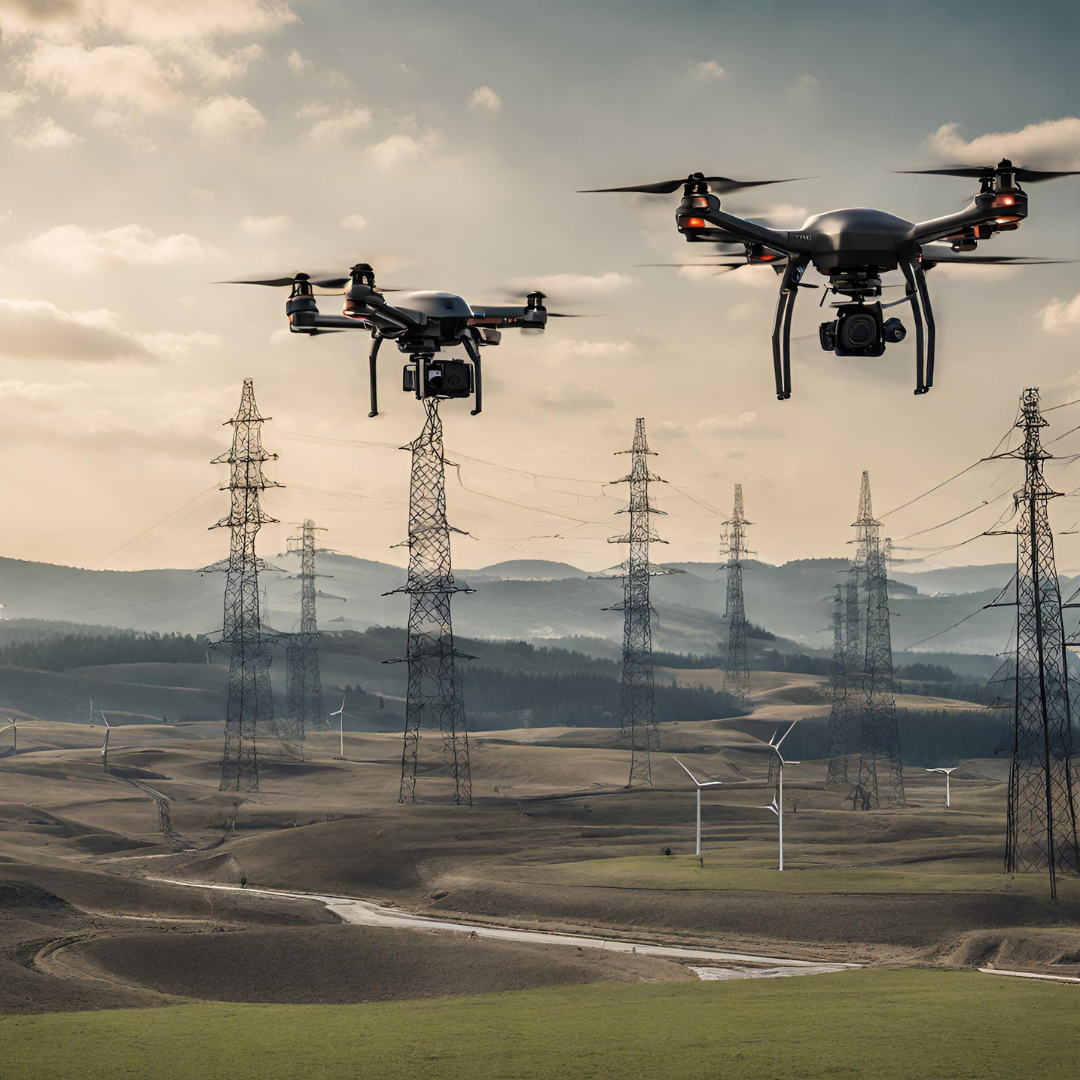This case study presents a hypothetical project for real-time monitoring of electrical infrastructure using drones and artificial intelligence algorithms. The project aims to develop an advanced system that enables the detection of faults, disturbances, and other issues in the electrical infrastructure, thereby improving its safety and efficiency.
Project Objectives:
- Real-time monitoring of electrical infrastructure..
- Identification of potential threats, such as damages to transmission lines, vegetation encroachment on the lines, insulator damages, and contamination on the lines.
- Generating reports from power grid monitoring.
Project Progress:
1. Data Collection from Cameras:
Recorded hundreds of hours of video footage from drones, focusing on electrical transmission lines.
2. Data Labeling:
Annotators labeled the data, marking various areas for monitoring, including:
- Visible faults in transmission lines,
- Vegetation encroachment on the lines,
- Insulator damages,
- Contaminations on the lines.
3. Utilization of Pretrained AI Algorithms:
Pretrained models based on deep learning and Convolutional Neural Networks (CNN) were employed.
4. Algorithm Fine-Tuning:
Algorithms were fine-tuned for predicting disturbances in the electrical infrastructure through training on labeled data.
5. Offline Experiments on Historical Data:
Achieved an accuracy of 92% on historical data, serving as a starting point for further improvements.
6. Data Collection and Algorithm Validation:
Additional data was gathered and used to evaluate the algorithm, achieving an accuracy of 89.5%.
7. Iterations to Improve the Algorithm:
Ensemble techniques were applied, combining results from different models, resulting in a 94% accuracy.
8. Work on AI Model Size Reduction:
To enable deployment on target devices, the model was optimized while preserving its effectiveness.
9. Pilot – Algorithm Deployment in Two Test Locations:
The algorithm was tested in real-world conditions at two locations, allowing assessment and adaptation to different terrain conditions.
10. Generating Drone Flight Reports:
The algorithm was integrated with drones, enabling the generation of reports with monitoring results after each drone flight.
Investments and Resource Allocation:
The total project cost was 800,000 PLN, distributed as follows:
- Data collection, preparation, and labeling: 50,000 PLN.
- Initial model development (Proof of Concept): 150,000 PLN.
- Testing: 80,000 PLN.
- Revisions and final model development: 420,000 PLN.
- Deployment, documentation, report generation: 100,000 PLN.
Results and Benefits:
- Operational Cost Reduction: By applying AI algorithms in monitoring electrical infrastructure, operational costs were reduced by 15%, including field inspections and time-consuming analyses.
- Reduction in Failure Costs: Early detection of faults led to an 18% reduction in costs associated with failures, avoiding catastrophic damages and prolonged downtimes.
- Annual Financial Savings: Assuming a consistent reduction in operational costs and avoidance of failure-related costs, estimated annual savings are 2.5 million PLN.
- Shortened Incident Response Time: The average response time to electrical incidents decreased by 70%, leading to quicker issue resolution and minimized incident impacts.







